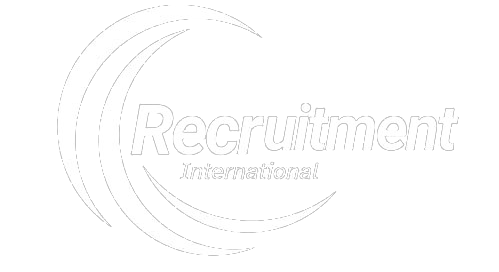Streamlining the Recruitment Process: Best Practices for Efficiency and Effectiveness
Streamlining the Recruitment Process
In the ever-evolving landscape of talent acquisition, streamlining the recruitment process has become imperative for organizations aiming to secure top-tier talent efficiently and effectively. As companies navigate through the intricate web of candidate sourcing, selection, and onboarding, the need to optimize each stage of the recruitment process becomes paramount. This article explores the best practices that can significantly enhance the efficiency and effectiveness of recruitment endeavors.
Understanding the Recruitment Process
Before delving into the intricacies of streamlining the recruitment process, it’s essential to grasp the fundamental stages involved. The recruitment process typically encompasses several key phases:
- Planning and Preparation: This phase involves defining the job roles and responsibilities, establishing selection criteria, and devising a comprehensive recruitment strategy.
- Candidate Sourcing: In this stage, recruiters actively seek out potential candidates through various channels such as job boards, social media platforms, professional networks, and talent databases.
- Screening and Selection: Once a pool of candidates is generated, recruiters proceed to screen applicants based on predetermined criteria. This phase may involve resume screening, preliminary interviews, and skills assessments.
- Interviewing: Shortlisted candidates undergo rigorous interview processes to assess their suitability for the role. This phase often includes multiple rounds of interviews with key stakeholders.
- Offer and Negotiation: Upon identifying the ideal candidate, the organization extends a formal job offer, which may involve negotiations regarding compensation, benefits, and other terms.
- Onboarding: The final phase entails integrating the newly hired employee into the organization, providing necessary training, resources, and support to ensure a smooth transition.
Best Practices for Efficiency and Effectiveness
1. Define Clear Job Roles and Responsibilities
The foundation of an effective recruitment process lies in a clear understanding of the job roles and responsibilities associated with the position. By defining these parameters upfront, recruiters can align their efforts with the organization’s strategic objectives and ensure that candidates meet the desired criteria. Utilizing job analysis techniques and collaborating closely with hiring managers can facilitate the creation of accurate and comprehensive job descriptions.
2. Embrace Technology
In an era dominated by digital innovation, leveraging technology can significantly streamline the recruitment process. Applicant Tracking Systems (ATS) automate routine tasks such as resume screening, candidate tracking, and interview scheduling, allowing recruiters to focus on more strategic activities. Additionally, AI-powered tools can analyze candidate data, predict job fit, and identify potential biases, enhancing the efficiency and fairness of the selection process.
3. Implement a Structured Interview Process
To ensure consistency and fairness in candidate evaluations, organizations should adopt a structured approach to interviewing. This involves developing standardized interview questions based on the job requirements and assessing candidates’ responses using predefined criteria. Behavioral interviewing techniques, case studies, and role-playing exercises can provide valuable insights into candidates’ skills, competencies, and cultural fit, enabling more informed hiring decisions.
4. Utilize Data Analytics
Data-driven decision-making has become increasingly prevalent in recruitment practices. By harnessing recruitment metrics such as time-to-fill, cost-per-hire, and candidate satisfaction scores, organizations can identify bottlenecks, trends, and areas for improvement within the recruitment process. Analyzing these insights empowers recruiters to optimize their strategies, allocate resources more efficiently, and ultimately enhance the overall effectiveness of talent acquisition efforts.
5. Foster Collaboration and Communication
Effective communication and collaboration between recruiters, hiring managers, and other stakeholders are essential for a streamlined recruitment process. Establishing clear channels of communication, setting realistic expectations, and providing regular updates on the progress of hiring initiatives can help mitigate delays and ensure alignment towards common goals. Collaborative tools such as applicant portals and team messaging platforms facilitate seamless coordination and information sharing among team members.
6. Prioritize Candidate Experience
In today’s competitive job market, providing a positive candidate experience is crucial for attracting and retaining top talent. From the initial application stage to the final onboarding process, candidates should feel valued, respected, and informed throughout their interaction with the organization. This involves streamlining application processes, providing timely feedback, and offering personalized communication tailored to candidates’ needs and preferences. A positive candidate experience not only enhances the employer brand but also fosters long-term engagement and loyalty among employees.
7. Continuous Evaluation and Improvement
Achieving optimal efficiency and effectiveness in the recruitment process is an ongoing endeavor that requires continuous evaluation and improvement. Organizations should regularly assess the effectiveness of their recruitment strategies, solicit feedback from internal and external stakeholders, and iterate on processes to address emerging challenges and capitalize on opportunities. By embracing a culture of continuous improvement, organizations can adapt to evolving market dynamics, stay ahead of the competition, and build a robust talent pipeline for future growth and success.
Conclusion
In today’s fast-paced business environment, streamlining the recruitment process is not merely a matter of convenience but a strategic imperative for organizational success. By adopting best practices that prioritize efficiency, effectiveness, and candidate experience, organizations can enhance their ability to attract, select, and onboard top talent seamlessly. Embracing technology, fostering collaboration, and continuously evaluating and improving recruitment processes are essential steps towards building a high-performing workforce and gaining a competitive edge in the market.







